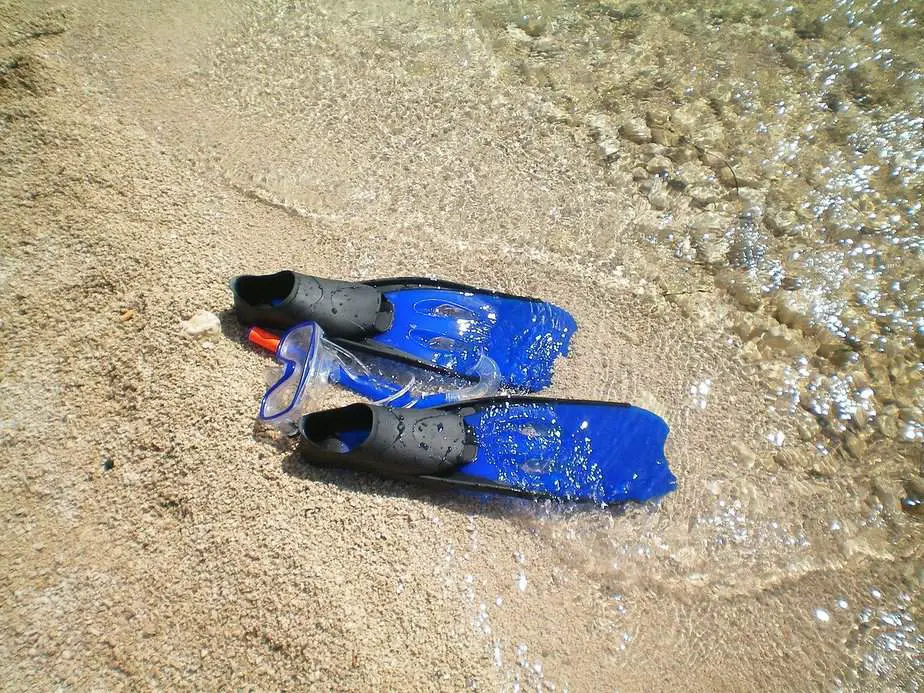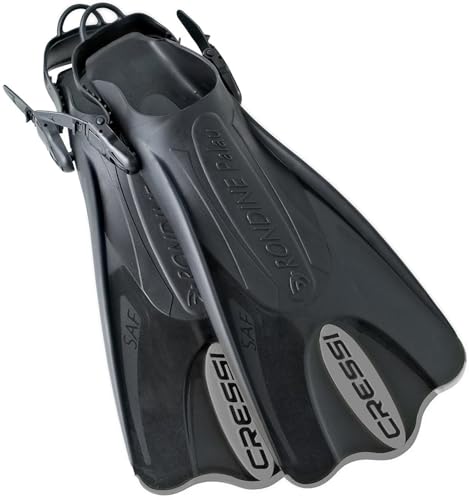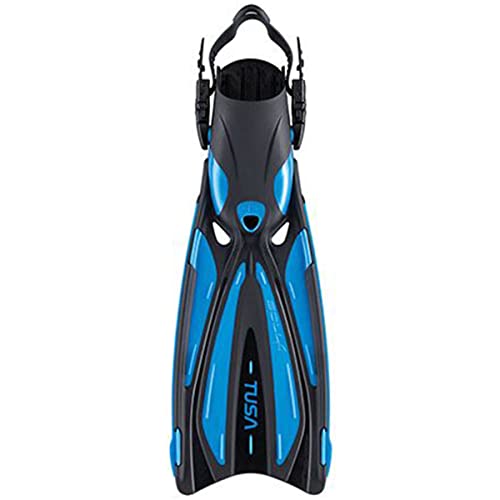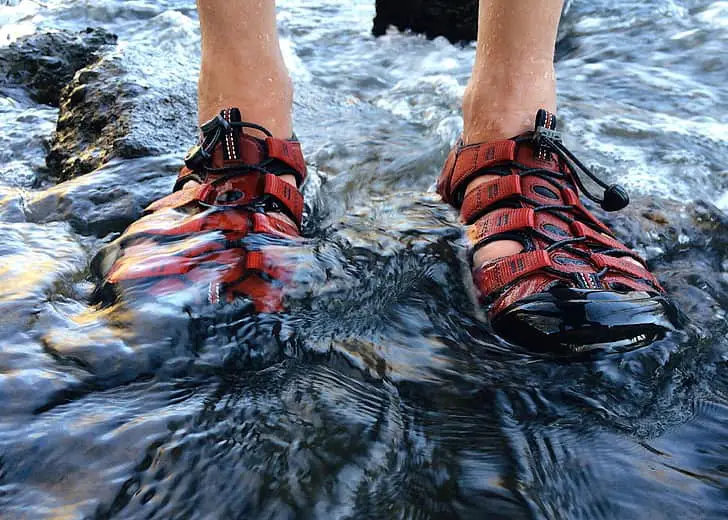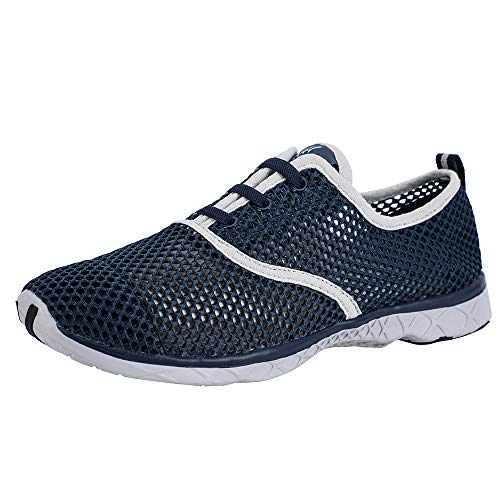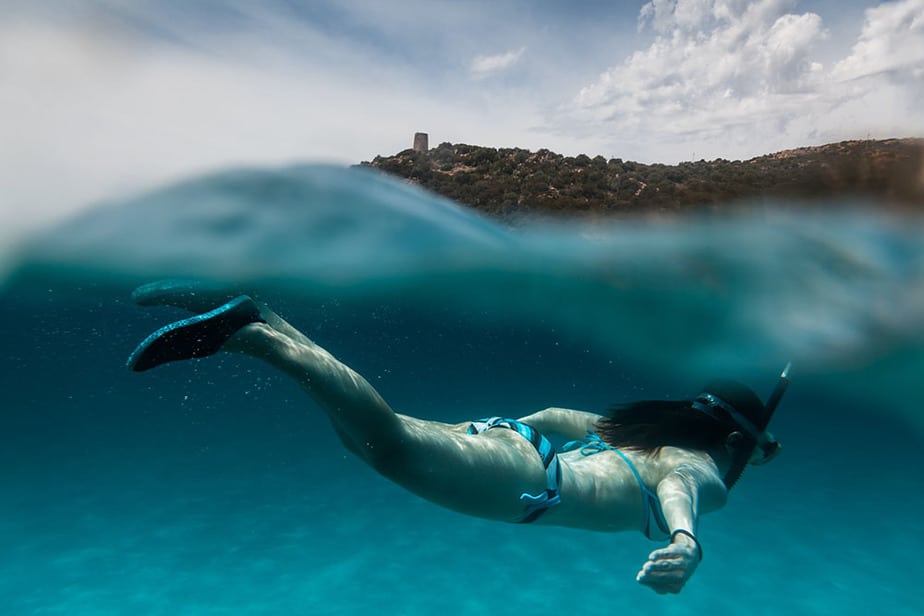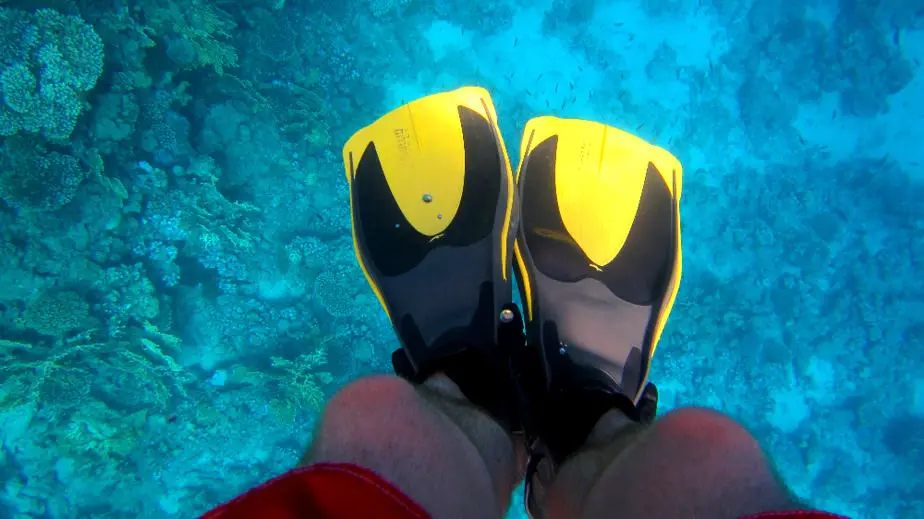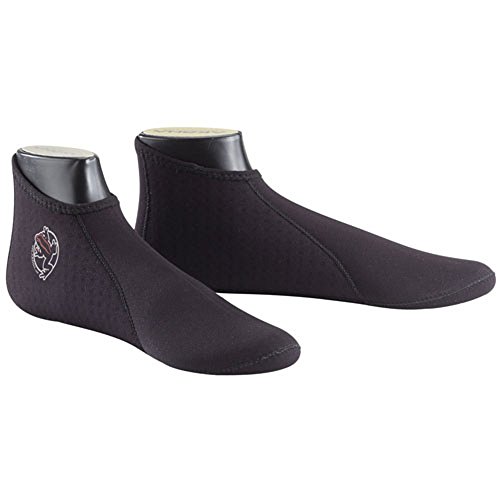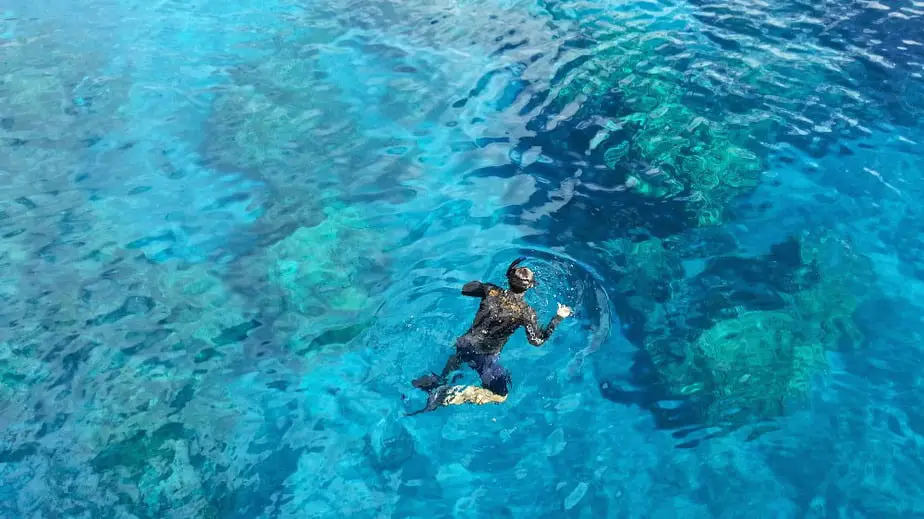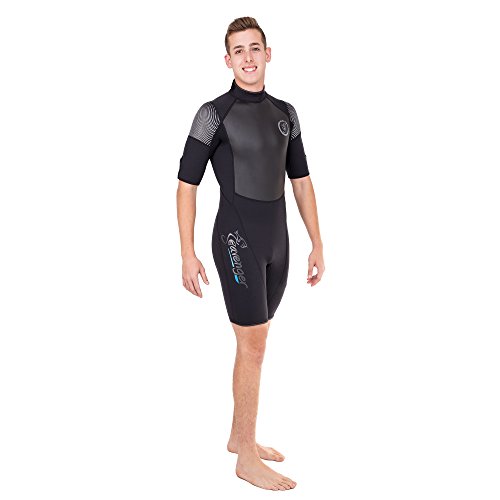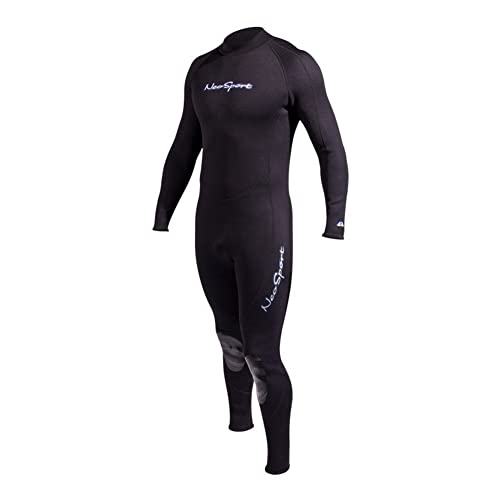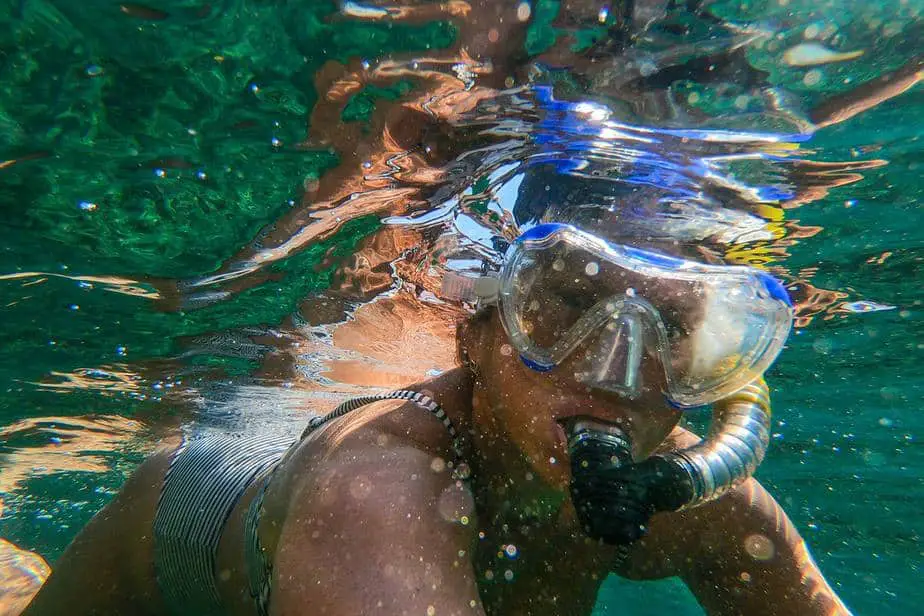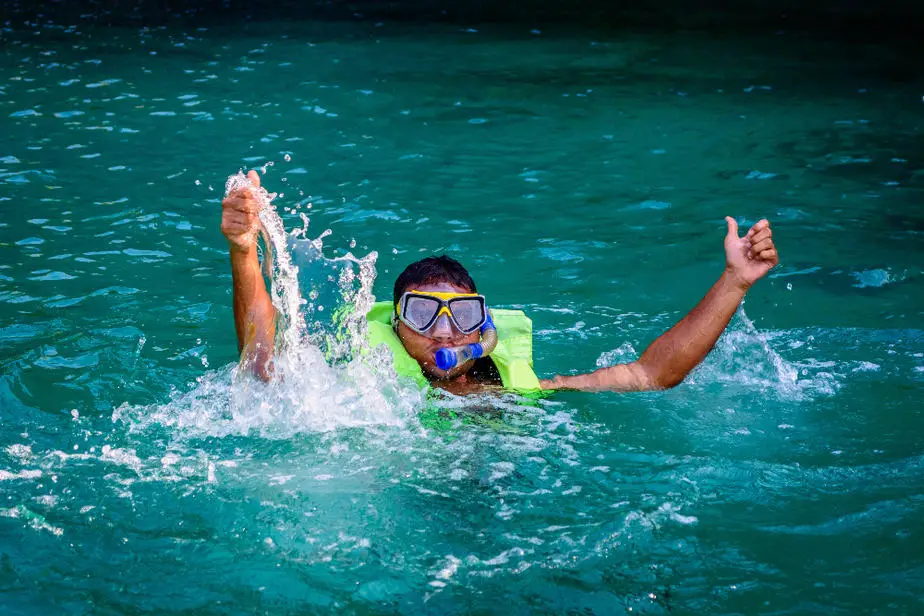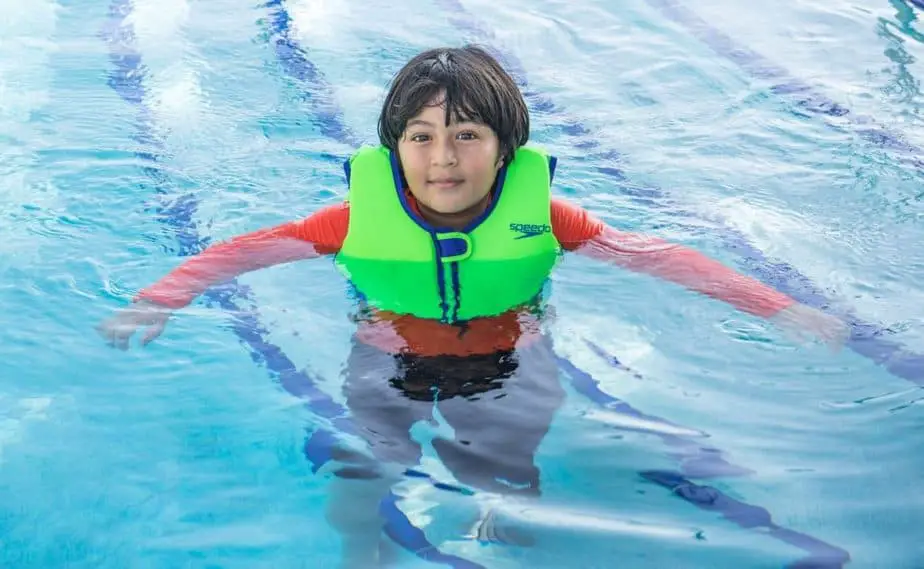It is a huge pain in the behind to shop for footwear when you have irregularly sized feet, especially if you are trying to buy snorkeling fins for wide feet. You have to consider whether you want an open heel or closed heel fin, whether to go barefoot or to wear dive booties (which makes your feet even wider by a few millimetres), and whether the fins can even comfortably accommodate wider than normal feet in the first place.
If this is something you are struggling with, we highly suggest you get your own snorkeling gear for your trips. Otherwise, you’re going to end up spending exorbitant amounts of time and money trying on all the fins from dive shops and not have them fit properly anyways. At least if you own your own gear, the only headache you might experience is during shopping, and with the tips in this guide, even that won’t be much of an issue.
Below are our recommended snorkeling fins for wide feet. Afterwards we discuss the top factors we considered in each snorkel fin to put together this list. Now, let’s head over to the review.
Our Top Picks:
Best Snorkeling Fins for Wide Feet
Tilos Getaway Snorkeling Fins
- Finally, snorkeling fins specifically for larger adults
- Adjustable fins large enough to fit wide feet
- Accommodates 3-4 consecutive sizes and can be worn over thin footwear
To start things off, these fins from Tilos are designed for snorkeling and wide feet in mind – perfect for this review. Unfortunately, their largest size is only a men’s size 13, so if you have big feet as well as wide feet, it may be a little on the small side. With that said, customers with foot widths that span 4E’s have found that the Tilos Getaway fins fit them comfortably.
Since they are open heel fins, the Tilos Getaway Snorkeling Fins are intended to be worn with neoprene socks and many customers still have no issues with space. Furthermore, one of the benefits of open heel fins is that the strap provides a lot of adjustability, allowing you to have the most snug and comfy fit. Don’t just take our word for it, numerous customer reviews all agree that the Tilos Getaway Snorkeling fin is an excellent choice for snorkelers and divers with wide feet, so give it a try.
Sporti Floating Swim Fins
- Color-coded by size, check the size chart before purchasing
- The long blade is designed to increase leg strength and speed
- Buoyancy from the fins lifts legs to the surface, making it easier for swimmers to find correct body position
Finding a snorkeling fin for wide feet requires a lot of trial and error, so why not try a low cost recommendation that just might do the trick? The snorkeling fins from Sporti, which are highly similar to the ones from Finis, often go for around $20 a pair with sizes up to size 15 for men.
It is a closed heel fin that is naturally buoyant and made of a natural soft rubber for increased comfort. Since there are so many sizes available, you can buy a few pairs for the whole family, and they even have toddler sizes too. When selecting a size, since you have wide feet, make sure you select one size up. The Sporti fins are a good budget option for the casual snorkeler that doesn’t want to spend a fortune on a wide fin.
Mako Freedive Hunter Fins
- Freediving fins with polypropylene composite blades designed to maximize thrust and stability
- Foot pockets are soft for comfort where needed, but stiffer where needed for increased transfer of energy
- Fixed blade freedive fins (foot pockets permanently attached) for any skill-level, including beginner free divers
Mako has a wide selection of fins available, but today we’re going to focus on the Mako Freedive Hunter Fins which are made of carbon and fiberglass. They are highly durable, with closed and open heel variations, as well as fins in various sizes. You can find them in sizes as large as men’s 15 in closed heel and open heel versions, and made from different high quality materials as well.
Furthermore, Mako has mentioned that their fins run a little large, so unlike the usual recommendation of ordering a size up for wide feet, perhaps you can order your “actual” size for once. Since these fins are intended for freediving, it is sturdy and powerful and intended to be worn with other underwater hunting gear. Overall, the Mako Freedive Hunter Fins are a great choice for beginners and those with wide feet, if a little on the pricey side.
ScubaPro Go Travel Fin
- Dive or snorkel in all-day comfort with the replaceable, self-adjusting bungee heel strap, which creates a versatile fit while making the fins easy to...
- The fins’ ultra-strong 100% Monprene construction won’t delaminate, break, or tear even after years of use.
- Performance features like a 25-degree angled blade and power bars on the underside of the rail make the fins fast, powerful, stable, and maneuverable...
ScubaPro is a trusted brand in the snorkeling diving equipment market, and their snorkeling fins also go up to quite large sizes for big and wide feet. The ScubaPro Go Travel Fin is an open heel fin that provides the comfort you’d expect from a full foot fin. It is made from durable, moldable Monprene which makes them resistant to broken blades, tearing, and delamination. As the name suggests, these fins are great for travel.
You’d expect fins that fit wide feet to be cumbersome, but they are extremely lightweight and fit in IATA carry-on compliant luggage. Next, the bungee heel strap of the ScubaPro Go Travel fin makes slipping them on and off quickly a cinch, and they help provide you with lots of thrust to really propel yourself forward.
A word of caution, customers have mentioned that these run a little small unless you plan on wearing them barefoot, and that it’s hard to wear them with dive booties unless you vastly oversize them.
Deep Blue Gear Aquanaut II Snorkeling Fins
- SLEEK AND COMFORTABLE – High-grade, natural rubber, full foot construction lets you glide through the water like a pro snorkeler or swimmer. The...
- MEDIUM FIN BLADE LENGTH – Not too long and not too short, these 100% rubber fins provide the perfect resistance in the water for maximum forward...
- FLOATING FINS – These fins fit right, but if they somehow become dislodged from the feet, they will stay and float in the water rather than sinking.
We love it when fins come in basically every size imaginable with many colors, and the Aquanaut II from Deep Blue Gear goes up to a men’s size 15. The blade length is not too long or short, and the 100% rubber fins are suitable for travel without weighing you down or occupying too much room. Since they are closed heel fins, you can wear them barefoot and the malleable rubber will reduce any chafing or rubbing.
Snorkelers and divers often worry about losing their fins if it accidentally slips off, but the Aquanaut II is naturally buoyant and will simply float up to be retrieved by you later. Furthermore, the soft fin blade of these fins allows them to have more give, making them crack and puncture resistant under heavy use. One customer with size “14 wide feet” found they fit comfortably. Furthermore, Deep Blue Gear claims this fin fits true to size, but or those with wide feet should consider ordering a size up.
CAPAS Snorkel Fins
- Adjustable Open Heel Design, Good for Sharing - The open-heel design means each fin can accommodate a wider range of sizes, so family members or...
- Wears Comfortably, Support Various Way to Put On - Carefully select high quality material, soft foot pocket, flexible enough for barefoot, but can...
- Compact Size, Perfect for Travelling - This short fins is an excellent choice for avid travelers as the short blade is lightweight and compact, making...
The CAPAS Snorkel Fins are open heeled, adjustable, and can accommodate many sizes including wide feet. Thanks to the strap, you can even share the fin with family members or friends that have similar foot sizes with just a small adjustment. The CAPAS Snorkel Fin is also designed to be compact for avid travelers that want a lightweight pair of fins to carry around.
Next, the blade design is such that it can be heavily bent, and this flexibility makes it neither too hard or soft for a smoother experience. With the CAPAS Snorkel Fins equipped, you’ll find that you’re effortlessly gliding through the water like a fish. Furthermore, those who want to wear these fins with dive booties need to order a size up, however some have even worn them barefoot and found that the soft rubber was gentle on their feet.
Lastly, these snorkel fins from CAPAS feature a flexible and sturdy sole, with non-slip inserts for additional protection as well as energy transfer from the legs to the fin for better propulsion. This is a solid choice for snorkelers with wide feet that travel a lot.
Cressi Palau Snorkeling Fin
- Multi-sized fins, ideal for sharing among family and friends or for rental departments. Designed for snorkeling, scuba diving, long swims.
- Short lightweight and responsive blade. Easy-kicking blade responds well to any kicking style.
- Blade extends from the top of the foot pocket for maximum surface area and to increase the propulsion force.
One glance and you’ll notice these are short fins, however these are capable of producing lots of power like a full-sized fin. The Cressi Palau Snorkeling Fin are light and can be worn with any underwater shoes. Due to their short length, you won’t have to worry about accidentally snatching the ocean floor, letting you snorkel around coral reefs without any issue. Next, thanks to its back strap, the Cressi Palau can be easily adjusted between four sizes to accommodate various underwater footwear or to share with family and friends.
We liked how the buckles on the Cressi Palau don’t rely on buttons, but crank-ridges to tighten them easily and securely. This can be done easily even while underwater, which is ideal for those with wide feet and would like to adjust the fit on the fly. Overall, the Cressi Palau are sturdy and highly versatile with the amount of shoe sizes it can fit, while being a compact short fin that is easy to take with you on trips.
Greatever Adjustable Snorkel Fins
- 【ADJUSTABLE STRAPS AND BUCKLES】Open heel design and adjustable straps make the swim fins suitable for different foot types and sizes, perfect to...
- 【PERFECT SWIM PARTNER】GREATEVER Snorkel Fins with scientific design, minimize fatigue and prevent cramps, it uses the unique open toe and cool...
- 【RELIABLE MATERIAL】The foot pocket with TPR material+Buckle with PC+ blade with PP. That's anti-deformation, lightweight, corrosion resistant and...
Yet another open heel fin, this time from Greatever and features adjustable straps that allow you to swap between four different sizes and foot types. It is perfect for sharing with family, wearing neoprene socks or dive booties, and for larger feet. The open toe design and flame shaped mesh design makes the fin more breathable and reduces resistance in the water. Next, the quick release buckle makes taking the fin off a breeze, and it will keep the strap’s length so that you can easily wear it again next time.
The Greatever Snorkel Fins have also been constructed using TPR, which is a special type of rubber that is lightweight yet durable and tear resistant. In addition, these snorkel fins are resistant to corrosion, deformation, and will last you a long time if you take care of them. They may even be comfortable enough to wear barefoot, and if not, then simply adjust the strap and pair it with a neoprene sock. We also liked how this pair of snorkel fins comes with a quick-dry mesh bag so that it can dry even in the bag. The Greatever Adjustable Snorkel Fins should be on your radar if you’re big on travelling.
Tusa SF-22 Solla Scuba Fins
- Powered by ForcElast Technology
- TUSA patented 20° Angled Blade Design (A.B.D.)
- Multi-compound foot pocket increases power transfer to the fin blade
Tusa have been around for many years, with divers that have over 35 years of experience trying the Tusa SF-22 Sola fins on and remembering what it was like to dive for the first time again. This fin features the latest advanced materials, including Tusa’s ForcElast technology that helps snorkelers propel further and faster than before. As for how it fits wide feet, many users have reported that they often have too much space around their toes, and they can even wear 5mm dive booties with it.
With that Tusa SF-22 Solla, you can expect heavy duty performance for use by the amateur-enthusiast. They offer great bang for your buck with how adjustable they are and how comfortable they fit around big feet. Furthermore, many customers found that these fins tend to run large, with one user claiming the “large” size is too big for his size 11.5, 4E feet, even with 5mm booties. If you have big feet, and speed and performance is something you’re looking for at a good price, then the Tusa SF-22 Solla is for you.
Do You Have Big Feet or Wide Feet?
Big feet or wide feet; they sound almost the same, but there is a big difference between them (excuse the pun).
Consider this. You can have big feet that are also wide. You can also have wide feet that aren’t very big. Or you can just have plain ol’ big feet. All of these scenarios will affect the type of fin you should get.
Here’s an example. If your shoe size has a standard “D” width, it will be easier for you to find a pair of fins that fit you even if you have size 15 feet compared to someone who wears an E width or more.
If your feet are truly wide rather than big, you can expect your shoe size to have at least one E after it, if not several E’s for people that have the widest of feet. If this describes you, then unfortunately you will have great difficulty finding shoes that fit you at all, let alone ones that fit comfortably.
Of course, this issue is not exclusive to only men. Women can have wide feet too, but it may be slightly easier for them to find a pair that fits since their feet are generally smaller than men’s. One issue women will encounter is the listed sizes which are designated with men in mind, so a woman who’s used to women’s sizes should consider getting a size down for an equivalent fit.
Types of Fins
There are two main fin types to consider: open heel and closed heel. Some fins are bulkier and longer because they were intended for scuba diving. Others are considered “barefoot” style which is better suited for snorkeling.
Open-heel fins are traditionally used for scuba diving, and can fit feet up to EEE width assuming you are also wearing them with neoprene socks. They might be wide enough that you could do without wearing any additional padding, however that’d make you susceptible to getting chafed by the strap. Furthermore, having a strap makes the open-heel fin more accommodating for larger feet.
Closed feel fins, otherwise known as full foot or barefoot fins, are intended to be worn without any additional aquatic footwear hence why they are known as barefoot fins. With that said, you can still decide to wear thin neoprene socks with it since you might want some extra insulation from cold water.
Open heeled fins tend to be more comfortable than full foot fins because the materials it is made from are often softer which may add to the enjoyment of your snorkeling experience.
Closed vs. Open Heel Fins for Wide Feet
The design of the foot pocket is the easiest way to tell these two types of fins apart when you are researching which type you’d prefer.
Open Heel
Open heeled fins have much larger and wider foot pockets because they are intended to be worn with dive booties. This is crucial because the the open heel strap will dig into your skin unless you have some form of protective footwear. Furthermore, dive booties will keep your feet insulated in cold waters, making them ideal for cold water diving or snorkeling.
Next, they also have the advantage of being easier to enter the water from the beach or shore, since the dive booties will offer protection against rocks as you are making your way to the dive site. Keep in mind, the weakest part of an open heel fin is the strap. Especially when you cram a big, wide foot in the foot pocket, the strap may be put under a lot of stress. It is recommended for snorkelers and divers to always bring a spare strap with them in case it breaks.
Closed Heel
Closed heel fins are considered to be the “classic” style fin. Despite how prevalent the new, modern open styled fins are, the smaller, full foot pocket style is still used by many snorkelers and divers today. It may be because they are more affordable than open heeled fins. When buying a full foot fin for wide feet, you will have to find one that fits perfectly because you do not have the luxury of adjusting a strap or changing dive booties for the perfect thickness.
Furthermore, since they provide little thermal protection, closed heel fins are limited for use in warm, tropical water only. Next, since there is not much adjustability, they may not be as comfortable to wear for long periods. And since they are intended to be worn barefoot, you may experience painful rubbing or chafing that will cut your snorkeling session short. Lastly, a poorly fitted fin may slip off your feet while you are kicking your legs.
The Big Issue
The trouble with buying snorkeling fins for wide feet is that it requires a lot of trial and error to find the right one for you. You will have to dig through tons of customer feedback to get a feel for whether a fin might be capable of handling wide feet. Since fins don’t fit the same way shoes do, even using your shoe size as a reference point may be futile.
With that said, most snorkeling or scuba fins are listed in US shoe sizes, but again that is no guarantee of a comfortable fit. If you have wide feet, we recommend buying a size up compared to your shoe size. And if you’re buying an open heel fin, you may have to factor in the thickness of a dive booty as well. People with narrow feet can just buy the equivalent of their shoe size and have a good chance of getting a snug fit, those lucky sons of guns!
Putting It All Together
The best snorkeling fins for wide feet depend on how you intend on using it. Do you want fins that can be used for both snorkeling and scuba diving? Do you plan on using them from time to time on vacations, or will you use them regularly?
The starting point is deciding whether you prefer to wear an open heel or closed heel fin. From here, a lot of trial and error will ensue. You’ll have to read many reviews, buy them, try them on, and return them if they aren’t to your liking. You may have to start with some of the cheaper options so that you don’t get burned too bad if things don’t fit well. However once you manage to get one that fits you snug, you’ll have the perfect reference point for future purchases.
Additional Snorkeling Gear

